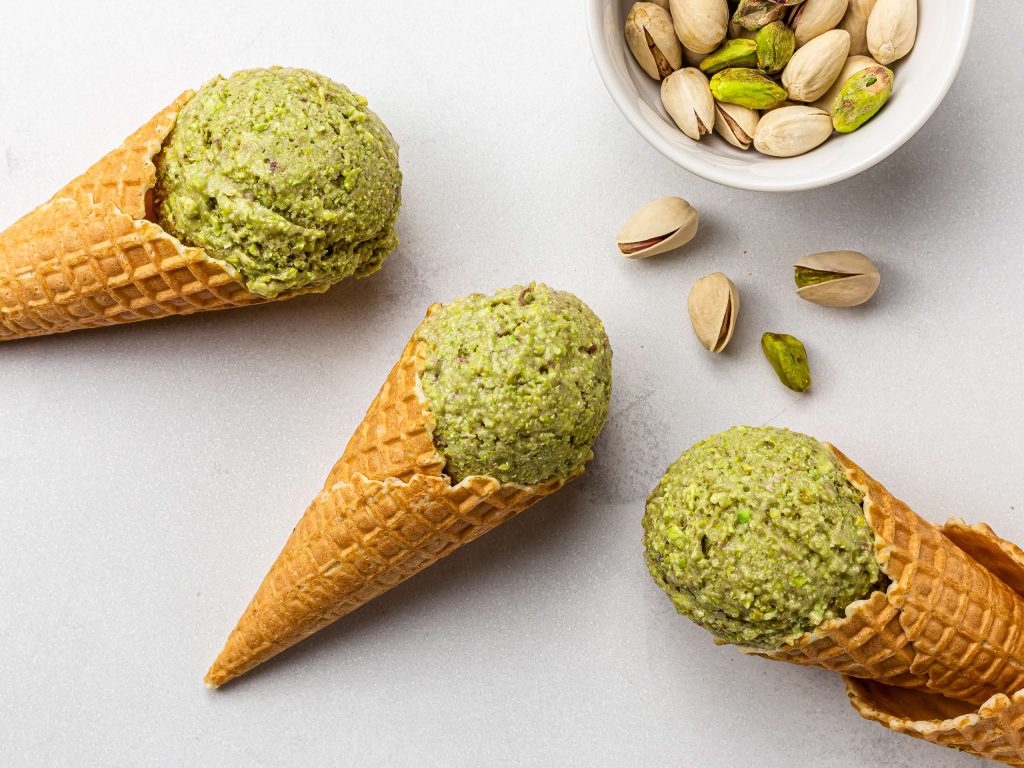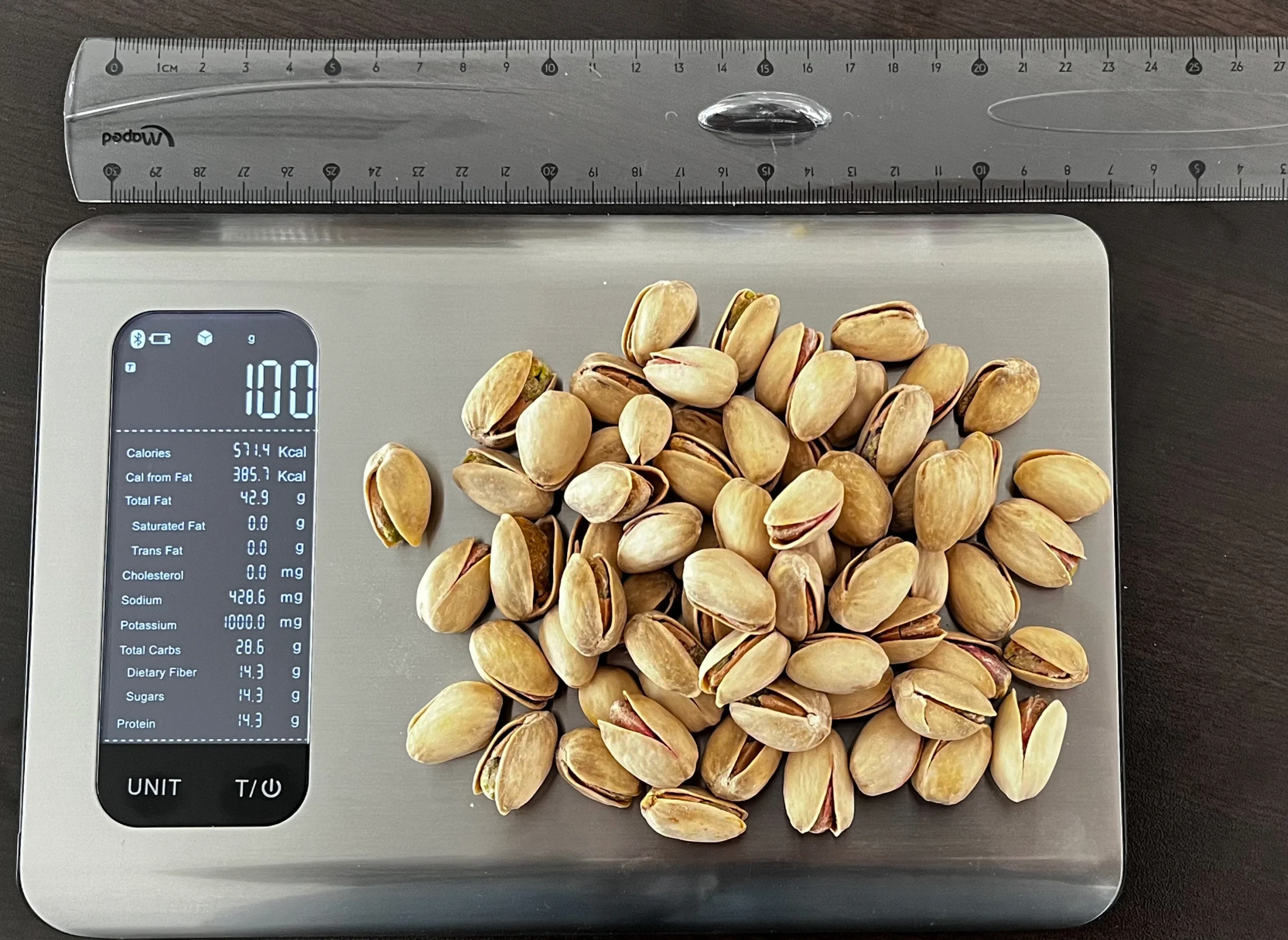
Uses
The kernels are often eaten whole, either fresh or roasted and salted,
and are also used in pistachio ice cream, traditional Persian ice cream, kulfi, spumoni, pistachio butter, pistachio paste, and confections such as baklava, pistachio chocolate, pistachio halva, pistachio lokum or biscotti, and cold cuts such as mortadella. Americans make pistachio salad, which includes fresh pistachios or pistachio pudding, whipped cream, and canned fruit. Indian cooking uses pounded pistachios with grilled meats, and in pulao rice dishes.
The shell of the pistachio is naturally a beige color, but it may be dyed red or green in commercial pistachios. Originally, dye was applied to hide stains on the shells caused when the nuts were picked by hand. In the 21st century, most pistachios are harvested by machine and the shells remain unstained.


